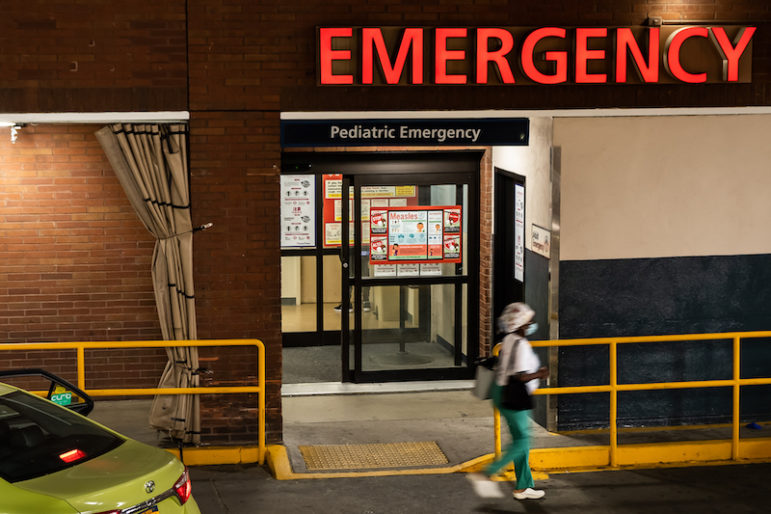
Photo by: Marc Fader
Local stores compete with national chains on Bay Ridge’s key retail strip of 86th Street.
Hinsch’s diner and ice cream store has nothing on Subway sandwich’s 90-country empire of 32,000 stores. Hinsch’s revenue in 2009 wasn’t anywhere near the $22.7 billion that McDonald’s pulled in. And unlike Wal-Mart, its executives and managers didn’t write more than $200,000 in federal campaign contributions during the last campaign cycle.
All Hinsch has is one location and 62 years of history. But that’s why Barbara McKeown, who has waited tables there for four decades, says it is an essential part of life in Bay Ridge.
“We’re the only place really left where people can come in here by themselves and be very comfortable,” she says. “I have people who are in their 50s—they come in here and say, ‘I remember when I was young, you gave me a lollipop.’ In here, they never walk out unhappy. They always come back, and they always remember.”
But as much as small, independent businesses like Hinsch’s define New York’s neighborhoods, a major investigation in the November issue of City Limits finds they are disappearing from them.
Neither the city nor the state tracks the number of small-business closures or openings, but store owners and their advocates, economists and real estate experts agree that recent years have been extraordinarily difficult for shopkeeping. A study last year by U.S. Rep. Anthony Weiner’s office found that of 5,991 stores surveyed citywide, 726 had closed or were in the process of closing—more than 12 percent. According to the federal Small Business Administration, the number of SBA-approved small-business loans in the five boroughs plummeted 500 percent from 2007 to 2009. The number of commercial eviction warrants—nearly 29,000 in New York City between 2006 and 2009—is cited as another indicator of how businesses are struggling.
As reporter Melanie Lefkowicz documents, the recession is only one reason small businesses are suffering. Changing demographics in many neighborhoods have brought changed customer tastes. The real estate boom meant rising commercial rents that the economic downturn has only partially deflated. Competition from chain stores and the lure of Internet commerce have also challenged mom and pop stores.
The Bloomberg administration created a Department of Small Business Services, which has expanded the number of business improvement districts, created online tools to help entrepreneurs navigate the red tape involved in starting a business and even helped steer some small business owners to loans.
But other city and state policies might be making life harder for small business owners. Owners complain about new taxes, tougher parking enforcement and rezoning and redevelopment initiatives that favor larger retailers over small stores or residential over commercial uses.
That’s led to calls for more radical measures to help small businesses, like commercial land trusts, bans on new chain stores like the one enacted in several San Francisco neighborhoods and commercial rent control. The administration opposed a recent City Council proposal to require landlords to submit to binding arbitration in disputes with commercial tenants; the idea has been shelved.
Some businesses are surviving and even thriving as neighborhoods change. Not far from Hinsch’s, Unique Jewelry made a crucial decision a couple years back to sell a new line of modular jewelry that departed from the store’s usual style but met customer demands. Globe Pharmacy fought off encroachment by chain drug stores and mail order companies by talking to local doctors about patients’ needs, launching a sister store that sells surgical supplies and specializing in custom medications. When Delfina hair salon could no longer afford its space, it sublet to Lucky Noor’s beautician practice, allowing her growing company room to boom.
For other business, however, the pressure from big chains, rising rents, changing tastes and unfriendly government policy remains a mortal threat. Gary Nudelman has run a pet store on 86th Street for two decades. As business has fallen off in recent years, he changed his product mix, slimmed down his stock, cut his staff and increased his own hours. But survival is still a doubtful prospect.
“You have no choice. You learn to buy better. You become leaner. You use your staff better,” he says. “But if it doesn’t start doing something soon, I’m going to be out of business after 26 years.”








